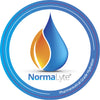Chronic Illness Flares in the Fall


We look forward to the seasons changing over in the fall autumn months. October seems to be the month when things start to change. Leaves begin to turn vibrant colors of orange, red, and yellow. The air becomes a little more crisp and cool. If you suffer from chronic illness, you may look forward to the change because it can mean an easing of symptoms.
CHRONIC ILLNESS FLARES IN THE FALL
The autumn months can also bring along changes that can impact your health. Called the “October Slide” chronic illness sufferers have noticed the difference. The days are shorter and darker, the barometric pressure changes, and seasonal illnesses and allergies rear their ugly heads.
It’s frustrating. The summer months are rough on chronic illness, and you’re looking forward to cooler temperatures that may ease your body. Sometimes those cooler temperatures come with a whole new myriad of problems. Let’s look at the seasonal changes that you should be aware of.
COMMON ILLNESSES THAT PEAK IN THE FALL
Allergies
Leaves changing and falling also bring about mold and ragweed spores. If you have Mast Cell Activation Syndrome (MCAS), a common comorbidity in patients with POTS, you should be extra vigilant during the autumn months so that you’re not experiencing what we call a fall flare. Asthma can be worse in the fall months for the same reasons.
Cold and Flu
The flu season usually begins in the fall months and lasts through the winter, peaking in December through February. Any illness you may contract can cause symptoms of postural orthostatic tachycardia syndrome (or POTS) to worsen. Even the important vaccinations you receive to stave off flu or coronavirus can cause mini flares of your chronic illness to happen if you’re not properly hydrated and prepared.
Arthritis
Arthritis is the inflammation of joints that tends to happen with age. However, if you’re someone who suffers from Ehler-Danlos Syndrome, an illness that affects joints and causes hyper-mobility, you may know the effects of arthritis all too well. Colder months can make your symptoms better in some ways, but worse in others. While arthritis is a year long condition, many people who suffer report that damp and cold weather can contribute to worsening symptoms.
Vitamin D Deficiency
You’re not outside getting the sunshine as much when the weather gets colder. This can lead to vitamin D deficiencies. Those symptoms include fatigue, getting sick more often, slow healing of wounds, hair loss, and more. Depression is another symptom of low vitamin D that should be closely watched.
MANAGING FALL FLARES
When you have dysautonomia, you have to watch your symptoms to know how to prevent and prepare yourself for the colder winter months. Some people with POTS and other chronic illnesses will find that they get relief from symptoms when the weather changes to cold. Others are surprised to notice a worsening. There are ways you can help yourself.
Keep up on your medication.
Talk to your doctor and keep up on prescribed medications. If your dysautonomia symptoms are worsening, be sure to tell your doctor. They may consider adjustments or offer advice for managing the fall flares you’re experiencing.
Avoid known triggers.
You know your body better than anyone else. There are things you may do that will contribute to flares making you feel worse. Maybe it’s that second cup of coffee that you had to have. Maybe it’s the glass of wine you drank in the evening. Or, maybe it’s the bath you took today. Avoid the known triggers.
Do some moderate exercises every day.
We know that exercise seems to be the answer for literally, well, everything. But, hear us out. Doing some light and modified exercises for your specific needs will not only get easier over time, but it can keep flares at bay. That doesn’t mean grab some running shoes and go for a jog. Do exercises that make sense for you.
Rest when you need it.
The opposite of exercise, you should recognize when you need to stay home and get some rest that day too. You’ll thank yourself later.
Hydrate, hydrate, hydrate!
Hydration plays a vital key in everyone’s health. Mild dehydration in even the most healthy person can cause havoc in the most basic functioning of our body. Electrolytes are great at hydrating because they force your body to hold onto the fluids you may be losing through sweat. It’s more efficient than drinking water alone. NormaLyte is a medical grade electrolyte that has been clinically proven to manage symptoms of POTS. Our PURE was made for people with dysautonomia, and it’s a great way to hydrate when you’re chronically dehydrated.







The fall right now is making me so sick. I can not wait till it’s colder
Leave a comment